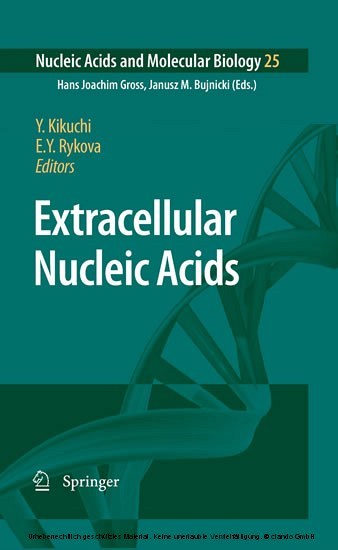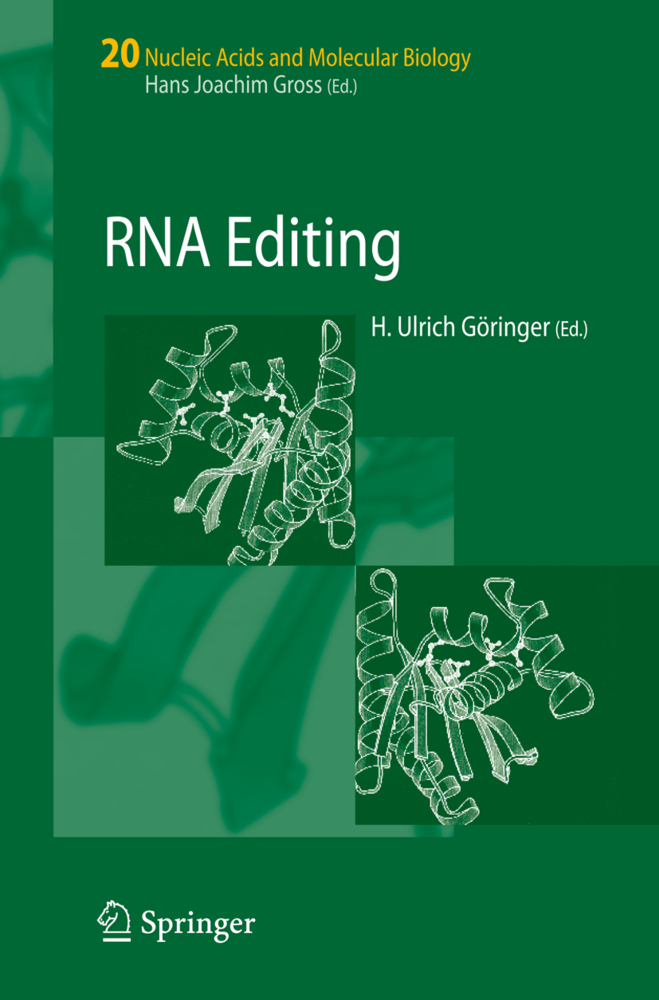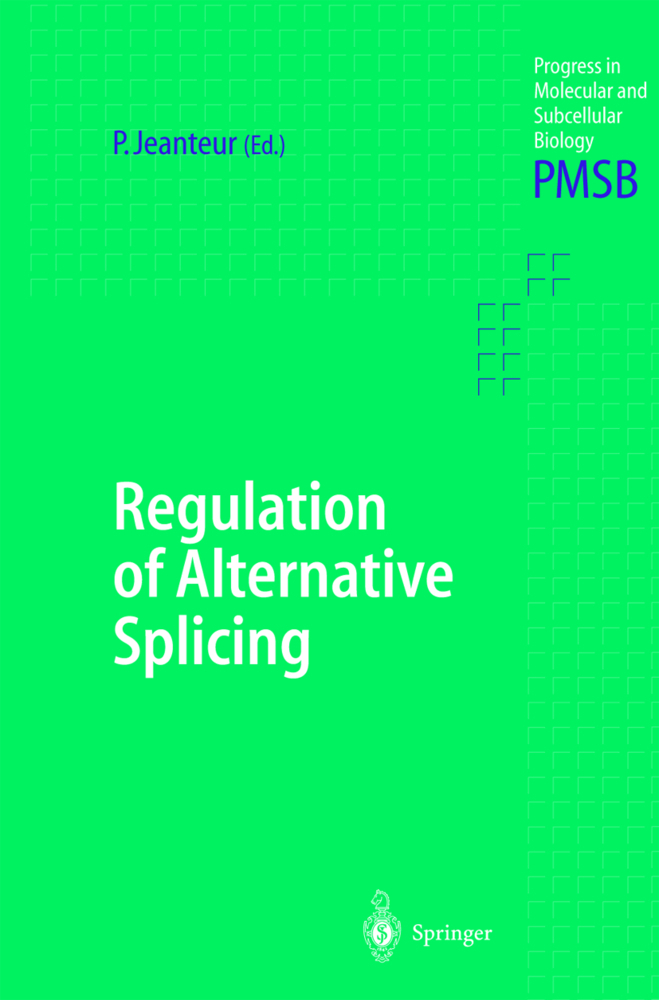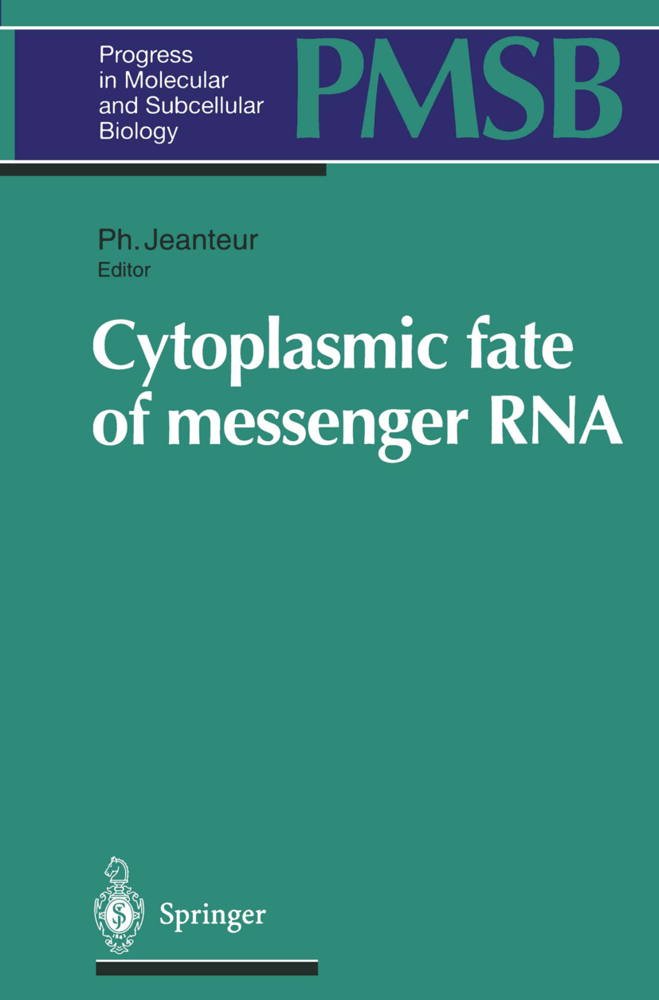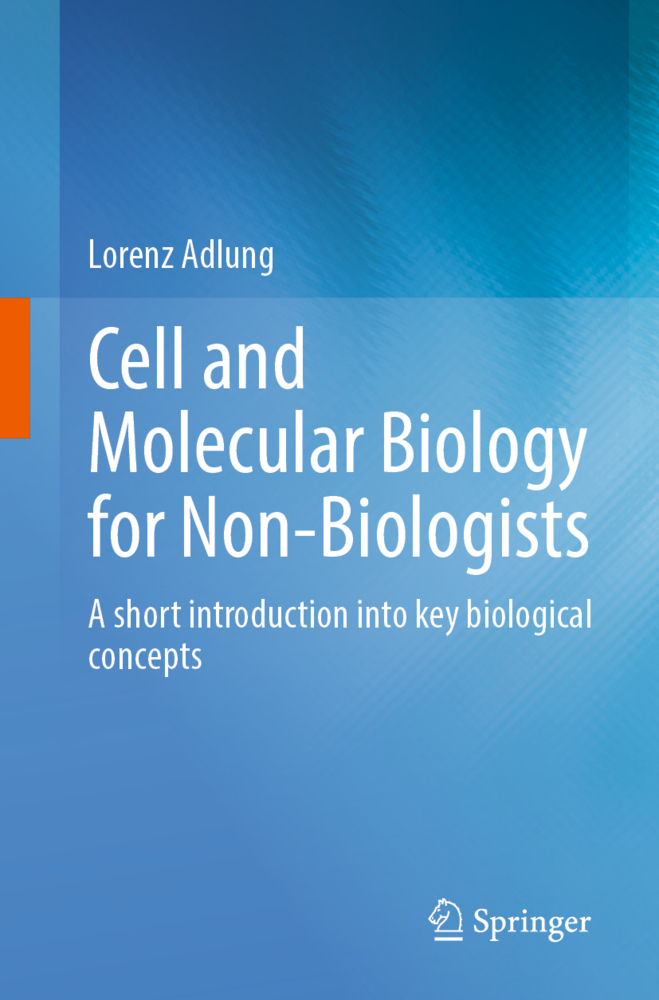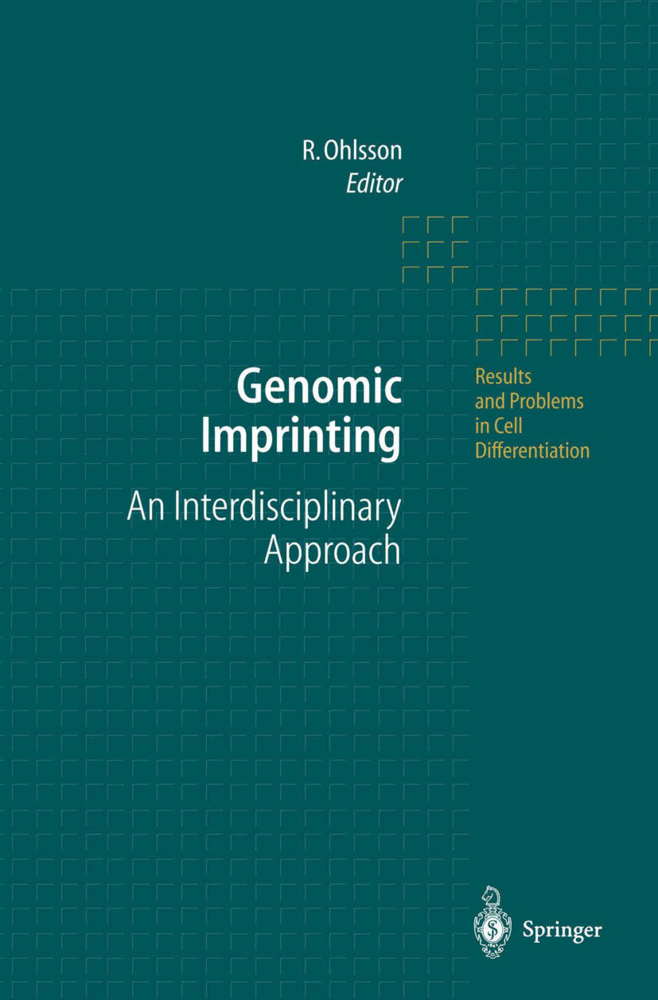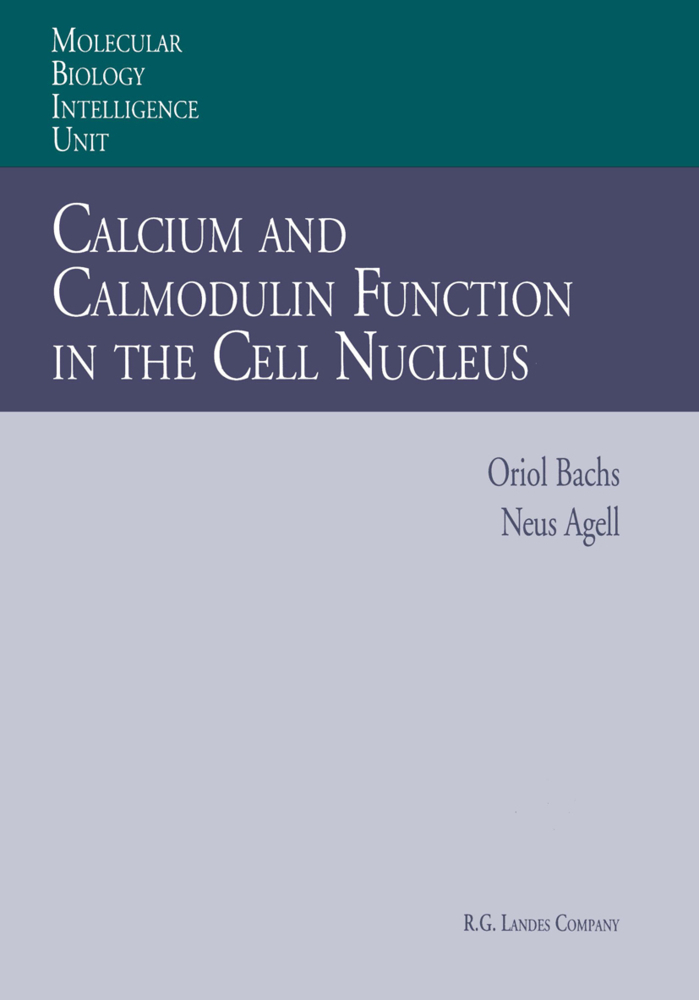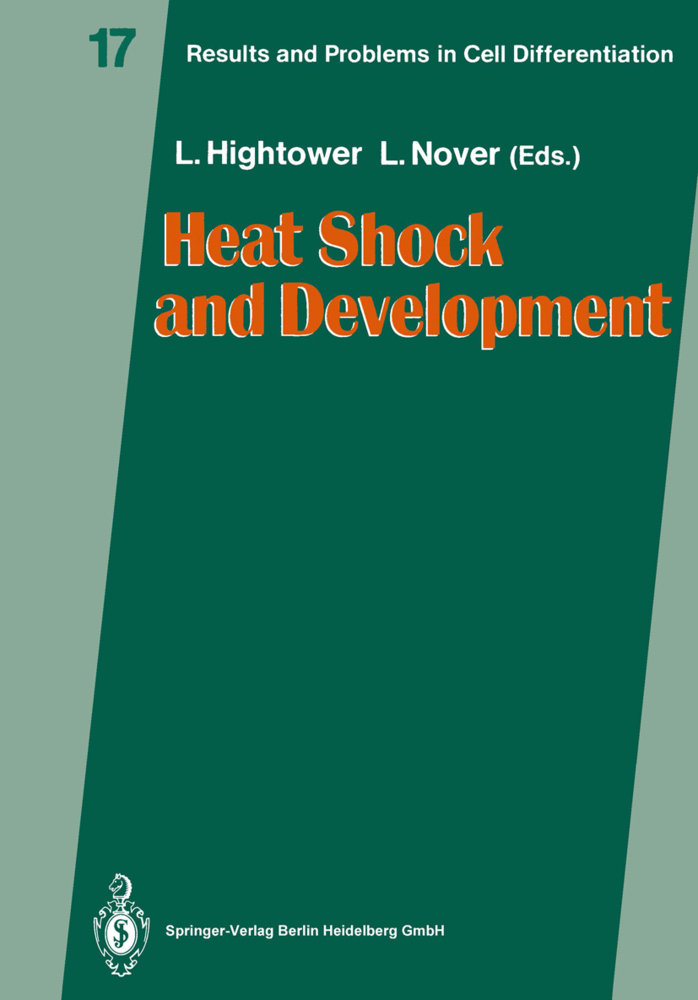Extracellular nucleic acids have recently emerged as important players in the fields of biology and the medical sciences. In the last several years, extracellular nucleic acids have been shown to be involved in not only microbial evolution as genetic elements but also to have structural roles in bacterial communities, such as biofilms. Circulating DNA and RNA have been found in human blood and expected to be useful as non-invasive markers for the diagnosis of several diseases. In addition, extracellular nucleic acids have attracted attention as active modulators of the immune system of higher organisms, including humans. This book covers nearly all of the newly developing fields related to extracellular nucleic acids, including those of basic biology, ecology and the medical sciences, and provides readers with the latest knowledge on them.
1;Preface;6 2;Contents;8 3;Contributors;10 4;Chapter 1: Extracellular DNA as Matrix Component in Microbial Biofilms;14 4.1;1.1 Introduction;15 4.2;1.2 Extracellular DNA as Matrix Component in P. aeruginosa Biofilm;16 4.3;1.3 Extracellular DNA as Matrix Component in Streptococcal Biofilm;19 4.4;1.4 Extracellular DNA as Matrix Component in Staphylococcal Biofilm;21 4.5;1.5 Final Remarks;23 4.6;References;23 5;Chapter 2: Gene Transfer Agents and Defective Bacteriophages as Sources of Extracellular Prokaryotic DNA;28 5.1;2.1 Viruses in the Environment and Packaging of Host DNA;28 5.2;2.2 Defective Phages and Extracellular DNA;30 5.3;2.3 Gene Transfer Agents and Extracellular DNA;31 5.4;2.4 Concluding Remarks;34 5.5;References;35 6;Chapter 3: Roles of Extracellular DNA in Bacterial Ecosystem;38 6.1;3.1 Extracellular DNA in Natural Environments;39 6.2;3.2 Extracellular DNA as Nutrient;40 6.3;3.3 Extracellular DNA as Genetic Material;40 6.4;3.4 Extracellular DNA in Biofilm;41 6.5;3.5 Uptake and Release of DNA;43 6.6;3.6 Uptake of Extracellular DNA by Indigenous Bacteria;47 6.7;References;48 7;Chapter 4: Stable Extracellular DNA: A Novel Substrate for Genetic Engineering that Mimics Horizontal Gene Transfer in Nature;51 7.1;4.1 Introduction;52 7.1.1;4.1.1 Transformable Recipient Microorganisms;53 7.1.2;4.1.2 Natural Transformation Demonstrated in the Laboratory Test-tube;54 7.1.3;4.1.3 Why Is Natural Transformation Important for Molecular Biology Research and Application?;55 7.2;4.2 Production of Stable Extracellular DNA Released from Donor Cells;56 7.2.1;4.2.1 Extracellular DNAs Released from Cells Lysed in the Laboratory;56 7.2.2;4.2.2 Extracellular DNA: An Active Substrate in the Natural Transformation of a Gram-Positive Bacterium;58 7.3;4.3 Engineered Natural Transformation in the Laboratory;60 7.3.1;4.3.1 Integration of Extracellular DNA into the Engineered Recipient Genome;60 7.3.2;4.3.2 Integration of 100kb DNA into B. subtilis by the CMM;61 7.4;4.4 Conclusions and Future Perspectives;61 7.5;References;63 8;Chapter 5: Extracellular Nucleic Acids of the Marine Phototrophic Bacterium Rhodovulum sulfidophilum and Related Bacteria: Physiology and Biotechnology;66 8.1;5.1 Introduction;67 8.2;5.2 Flocculation and Extracellular Nucleic Acid Production;67 8.2.1;5.2.1 Rhodovulum sp. Strain PS88;67 8.2.2;5.2.2 Extracellular DNA and Flocculation of Rhodovulum sulfidophilum;69 8.2.3;5.2.3 DNA as the Cell-to-Cell Interconnecting Compound in Floc of Rdv. sulfidophilum ;71 8.3;5.3 Analysis of Extracellular Nucleic Acids;72 8.3.1;5.3.1 Extracellular RNAs of Rdv. sulfidophilum;72 8.3.2;5.3.2 Extracellular DNA of Rdv. sulfidophilum;73 8.3.3;5.3.3 Mechanism for Release of Extracellular DNA and RNA of Rdv. sulfidophilum;73 8.4;5.4 Biotechnology;74 8.4.1;5.4.1 Utility as a Nucleotide Source;74 8.4.2;5.4.2 RNA Drug Production by Engineered Plasmids;74 8.5;References;76 9;Chapter 6: Systemic RNAi in C. elegans from the Viewpoint of RNA as Extracellular Signals;79 9.1;6.1 Introduction;80 9.2;6.2 Systemic RNAi and Trafficking Pathways Associated with Method of Delivery;80 9.2.1;6.2.1 Systemic and Heritable Nature of RNAi in Response to Injected dsRNA;82 9.2.2;6.2.2 Systemic Nature of RNAi in Response to Transgene Delivery of dsRNA;83 9.2.3;6.2.3 Systemic RNAi in Response to Ingestion of dsRNA;85 9.3;6.3 RNA Silencing Mechanisms in C. elegans;85 9.3.1;6.3.1 The Nature of Silencing Molecules in C. elegans;88 9.3.1.1;6.3.1.1 RNA Silencing Molecules Associated with Experimental Delivery of dsRNA;88 9.3.1.2;6.3.1.2 Endogenous Silencing RNAs and Associated RNA Silencing Mechanisms;89 9.3.2;6.3.2 Mechanisms that Inhibit RNAi Responses;92 9.3.3;6.3.3 Mechanisms that Facilitate Spreading of RNA Silencing Molecules;93 9.3.3.1;6.3.3.1 Endocytosis;94 9.3.3.2;6.3.3.2 Transmembrane Proteins;96 9.4;6.4 Conclusions;98 9.5;References;99 10;Chapter 7: Circulating Nucleic Acids in Health and Disease;103 10.1;7.1 Introduction;104 10.2;7.2 Circulating NA in Cancer;104 10.
| ISBN | 9783642126178 |
|---|---|
| Artikelnummer | 9783642126178 |
| Medientyp | E-Book - PDF |
| Auflage | 2. Aufl. |
| Copyrightjahr | 2010 |
| Verlag | Springer-Verlag |
| Umfang | 232 Seiten |
| Sprache | Englisch |
| Kopierschutz | Digitales Wasserzeichen |

